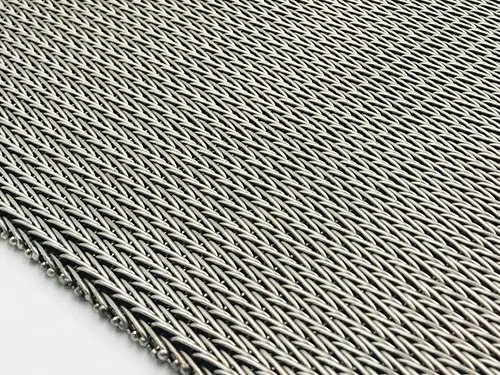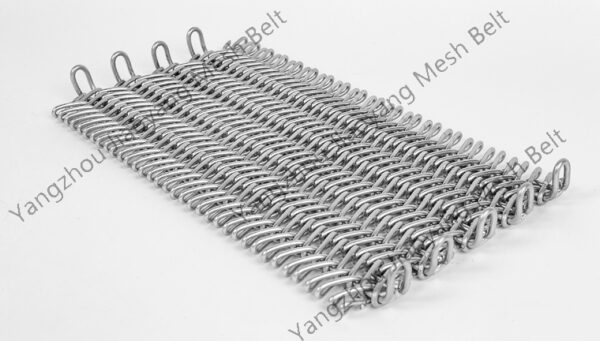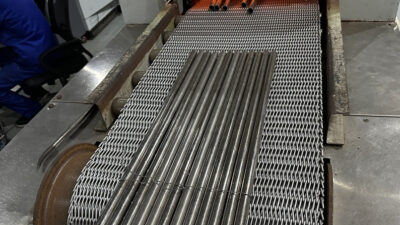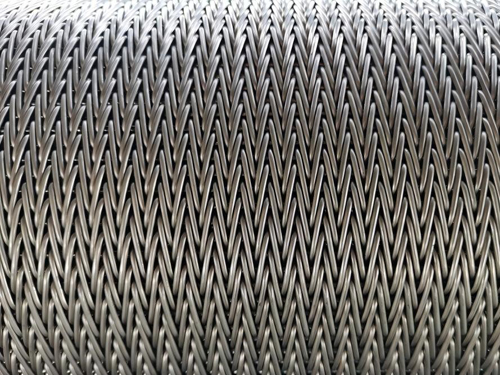NEWSNEWS
Featured products
Contact Us
Conveyor Belt Deviation Analysis and Solutions
2025-06-03Core Insight
Belt deviation occurs due to force imbalance in the conveyor system. Our technical analysis covers all causes and proven solutions for industrial Conveyor mesh belts.
I. Root Causes & Solutions
1. Structural Causes
| Problem | Mechanism | Solution |
|---|---|---|
| Misaligned Splice | Welding offset causes tension imbalance | Laser calibration + TIG seamless splicing |
| Frame Deformation | Metal fatigue from chronic overload | Add reinforcement ribs (≥6mm thick) |
| Asymmetric Edge Wear | Friction coefficient difference on single side | Install dual nylon guide strips |
2. Mechanical System Causes
| Problem | Mechanism | Solution |
|---|---|---|
| Cylinder Taper Error | Diameter deviation >0.5mm/m | CNC reprocessing (±0.1mm precision) |
| Idler Levelness Issue | Installation flatness >3‰ | Laser level adjustment (≤1‰) |
| Drive Wheel Rubber Wear | Rubber thickness difference >2mm | On-site vulcanization (85A Shore hardness) |
3. Load & Environmental Causes
| Problem | Mechanism | Solution |
|---|---|---|
| Material Eccentric Load | Single-side load >30% of design | Add flow guides + vibration feeders |
| High-Temperature Creep | Elongation difference >5% at 400℃+ | Switch to 314SS + pre-stretching |
| Oil Contamination | Lubricant reduces friction coefficient | Install self-cleaning scrapers (polyurethane) |
II. Jiaoyang Anti-Deviation Technology
1. Preventive Design
- Edge Reinforcement: 0.5mm thickened edges (↑40% wear resistance)
- Intelligent Structure: V-guide rail + herringbone pattern
A[V-Guide Rail] –> B[Limits lateral movement]
C[Herringbone Non-slip Pattern] –> D[Increases friction coefficient]
C[Herringbone Non-slip Pattern] –> D[Increases friction coefficient]
2. Installation Standards
- Tension Calibration: 15-20N/mm² initial tension
- Deviation Test: <3% of belt width after 1hr empty run
- Thermal Compensation: 0.3% expansion margin (300℃ operation)
3. Quick Correction Kit
Mechanical: Adjustable tension wheel (±50mm instant correction)
Smart System: Auto-correction with PLC control
Sensor->>PLC: Detect deviation
PLC->>Corrector: Send pulse signal
Corrector->>Cylinder: Auto-adjust angle
III. Case Study: Vietnam Auto Parts Factory
Problem: Monthly deviation downtime (6 times)
Jiaoyang Solution:
- 314SS pre-stretched belt with edge reinforcement
- Infrared auto-correction system
Result: Zero deviation in 8 months ($86,000/year saved)
IV. Maintenance Protocol
Daily Inspection
- Weekly edge wear measurement (>3mm requires adjustment)
- Monthly roller cleaning (prevent oil buildup)
Emergency Procedure
flowchart LR
DetectDeviation –> EmergencyStop
EmergencyStop –> CheckLoadDistribution
CheckLoadDistribution –> AdjustTailTension
DetectDeviation –> EmergencyStop
EmergencyStop –> CheckLoadDistribution
CheckLoadDistribution –> AdjustTailTension








